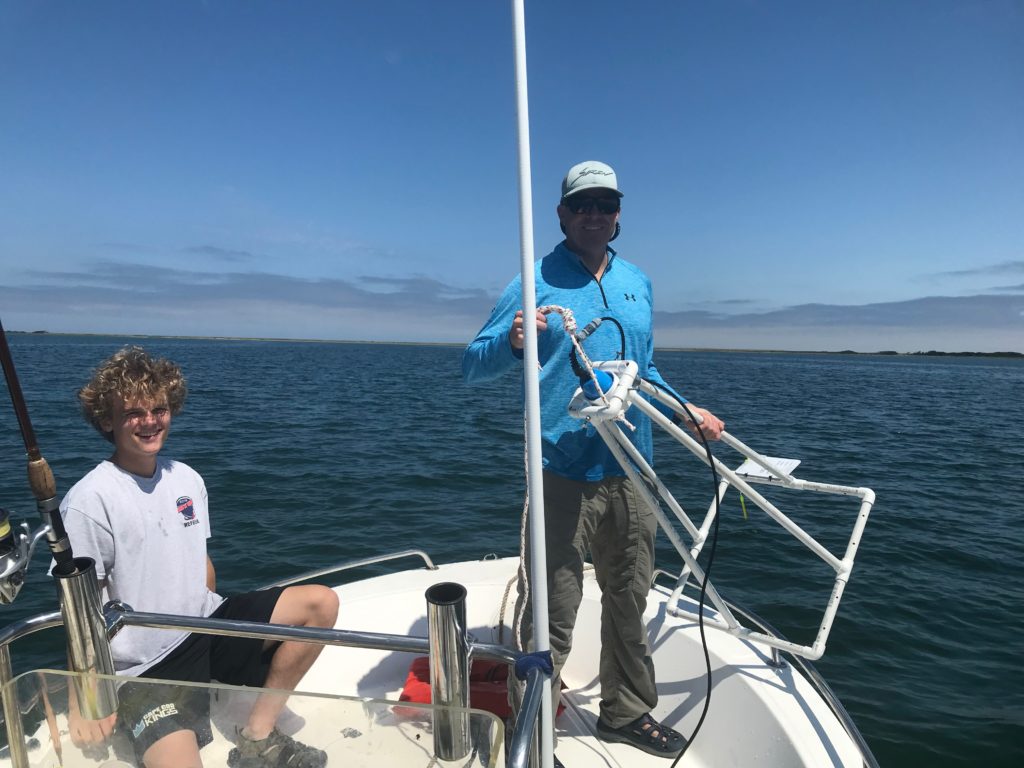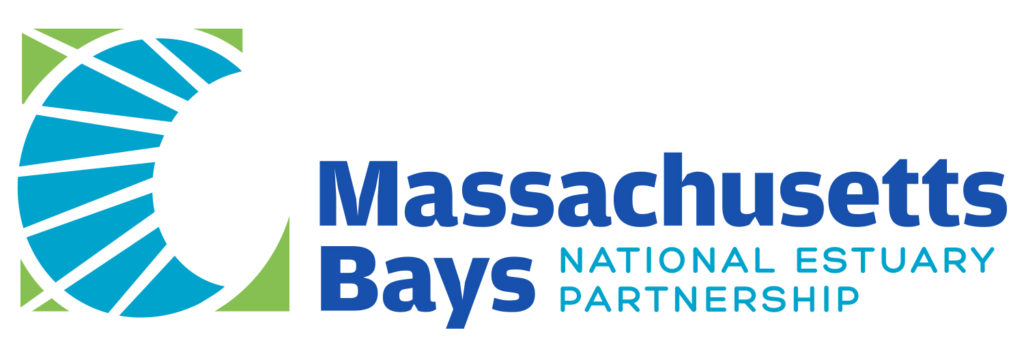By Olivia Freud, NSRWA\MassBays Summer Intern
 Throughout the week of August 8, 2021 the NSRWA, MassBays, and Massachusetts Division of Marine Fisheries had their 4th annual collaborative Eelgrass Blitz surveying event. With the amazing help of five local boat captains and fifteen volunteers, we were able to survey 71 different sites!
Throughout the week of August 8, 2021 the NSRWA, MassBays, and Massachusetts Division of Marine Fisheries had their 4th annual collaborative Eelgrass Blitz surveying event. With the amazing help of five local boat captains and fifteen volunteers, we were able to survey 71 different sites!
In this event, teams of local volunteers accompanied by one or more staff members went out to pre-selected sites in the Duxbury/Kingston/Plymouth Bays to assess the percent coverage of eelgrass that has been on an unfortunate declining trend for the past several decades. The overall goal of this recurring event is to consistently and frequently monitor the changes in eelgrass health and overall coverage within the embayment and find out what is driving these losses. Eelgrass beds are ecologically valuable in several ways, including their ability to trap atmospheric carbon, hold sediment in place, and provide food and shelter for a variety of marine organisms.
 The two main data collected at each of the sites were turbidity measurements and eelgrass coverage. Turbidity was determined by lowering a Secchi disk into the water on both sides of the boat and measuring the furthest distance at which the disk was visible to the human eye. This assessment of water clarity is important when looking at eelgrass coverage, because as a true grass, eelgrass needs sunlight to grow, and high turbidity could negatively impact eelgrass density. To measure the percent coverage of eelgrass, we used a drop frame with an attached underwater camera that was connected to a live camera feed we viewed from the boat, determined percent coverage and took a picture of the floor. We released the drop frame off of each of the four corners of the boat, and at the 62 sites that were predetermined “indicator stations”, we completed a sample collection from each of the corners where eelgrass was seen. Three blades from each corner recorded to have any percentage of eelgrass were collected and assessed for wasting disease and epiphyte coverage, before photographing the samples and returning them back in the water.
The two main data collected at each of the sites were turbidity measurements and eelgrass coverage. Turbidity was determined by lowering a Secchi disk into the water on both sides of the boat and measuring the furthest distance at which the disk was visible to the human eye. This assessment of water clarity is important when looking at eelgrass coverage, because as a true grass, eelgrass needs sunlight to grow, and high turbidity could negatively impact eelgrass density. To measure the percent coverage of eelgrass, we used a drop frame with an attached underwater camera that was connected to a live camera feed we viewed from the boat, determined percent coverage and took a picture of the floor. We released the drop frame off of each of the four corners of the boat, and at the 62 sites that were predetermined “indicator stations”, we completed a sample collection from each of the corners where eelgrass was seen. Three blades from each corner recorded to have any percentage of eelgrass were collected and assessed for wasting disease and epiphyte coverage, before photographing the samples and returning them back in the water.
Thank you to all of our participants!
Click here to see all the photos on Facebook. (Photo credits Nedret Andre)


